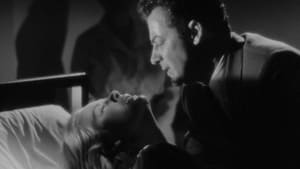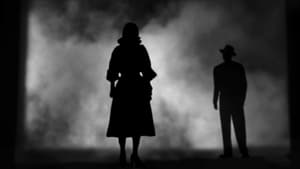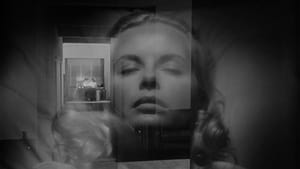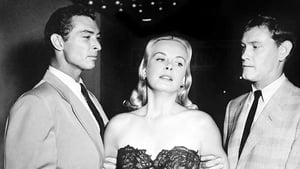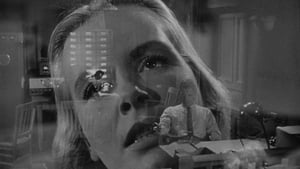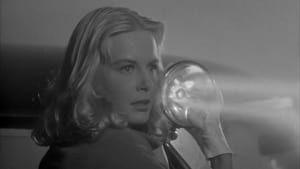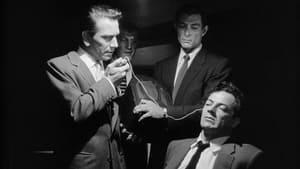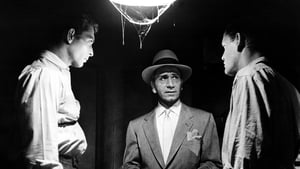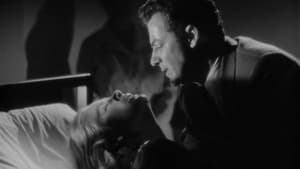Contact: [email protected]
Video Sources 0 Views
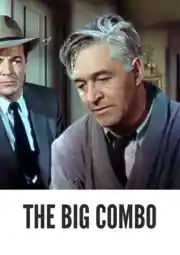
Synopsis
[ez-toc]




Introduction
In the vast landscape of old movies, certain gems stand out not only for their storytelling prowess but also for their visual impact. One such masterpiece that has transcended time is The Big Combo Colorized (1955), a quintessential American film noir crime film directed by Joseph H. Lewis and lensed by the legendary cinematographer John Alton. As we delve into the labyrinthine alleys of this cinematic gem, we explore not only the gripping narrative and stellar performances but also the significance of colorization in breathing new life into old films.
Read Media File Transfer Agreement: Terms and Conditions
Read FAQ
Understanding Film Noir and The Big Combo’s Colorized Place in History
Film noir, a genre characterized by its dark themes, complex characters, and distinctive visual style, reached its zenith in the 1940s and ’50s. The Big Combo Colorized, released in 1955, exemplifies the noir tradition with its labyrinthine plot, morally ambiguous characters, and atmospheric cinematography. It’s a journey into the shadows of human nature, where crime and passion intertwine in a dance of deception and desire.
Joseph H. Lewis, known for his innovative approach to storytelling, brought a unique vision to The Big Combo Colorized. Collaborating with the maestro of shadows, cinematographer John Alton, Lewis crafted a visual spectacle that not only encapsulates the essence of film noir but also pushes its boundaries. The chiaroscuro lighting and deep shadows, trademarks of Alton’s cinematography, elevate the film’s mood, creating an immersive experience for the audience.
The Big Combo Colorized: From Shadows to Color
Unraveling the Tapestry of Characters
The Big Combo Colorized revolves around the enigmatic Mr. Brown, played with magnetic intensity by Richard Conte. Brown is a crime lord whose ruthlessness knows no bounds. Cornel Wilde portrays the relentless and determined police detective Leonard Diamond, while Jean Wallace takes on the role of Susan Lowell, caught in the web of Mr. Brown’s criminal empire. The film weaves a complex narrative around these characters, their relationships, and the shadows of Alicia’s past, unveiling layers of intrigue and suspense.
The chemistry between the characters is palpable, and the intricate relationships add depth to the story. As Diamond inches closer to Brown, the tension escalates, and the audience is taken on a rollercoaster ride through the seedy underbelly of crime and corruption.
Behind the Camera: Visionary Filmmakers
Joseph H. Lewis: Architect of Shadows
Joseph H. Lewis, often referred to as a master of B-movies, demonstrated his prowess in crafting compelling narratives with The Big Combo Colorized. His directorial style, marked by dynamic camera movements and unconventional storytelling techniques, helped redefine the noir genre. Lewis’s ability to blend suspense and psychological drama is evident in every frame, creating an atmosphere that lingers long after the credits roll.
John Alton: Painting with Light
Cinematographer John Alton’s contribution to The Big Combo Colorized cannot be overstated. His mastery of light and shadow transforms the screen into a canvas, where every frame is a visual symphony. Alton’s use of low-key lighting and chiaroscuro techniques not only enhances the suspenseful mood but also elevates the film to a visual spectacle. The collaboration between Lewis and Alton is a testament to their creative synergy, resulting in a cinematic experience that transcends the limitations of its time.
Colorizing a Classic: The Art and Controversy
As we delve into the realm of preserving classic films, the discussion invariably turns to colorization—a process that has both revived and sparked controversy within the cinematic community. The Big Combo, originally presented in black and white, underwent the colorization process, raising questions about the preservation of the director’s vision versus the appeal of a modern, colorized version.
Understanding Colorization
Colorization is a meticulous process that involves adding color to a black and white film. While the intention is to breathe new life into old classics, the practice has been met with skepticism and debate. Advocates argue that colorization introduces contemporary audiences to timeless classics, making them more accessible and engaging. Critics, on the other hand, contend that colorization can compromise the artistic intent of the original creators.
Controversies Surrounding Colorization
The controversy surrounding colorization stems from concerns about altering the visual language and atmosphere of a film. Purists argue that the intended impact of shadows and contrast, integral to film noir, may be diluted or lost entirely in the colorization process. As we explore The Big Combo in its colorized form, we must navigate the delicate balance between preserving the legacy of the film and embracing the technological advancements that colorization brings.
Reviving The Big Combo Colorized in Stunning Color
The Decision to Colorize: Restoring or Altering?
The decision to colorize The Big Combo was met with both excitement and apprehension. While purists may argue that tampering with a black and white classic risks diluting its essence, proponents of colorization view it as a means to introduce these cinematic treasures to a new generation. As we assess the colorized version of The Big Combo Colorized, it’s essential to consider whether colorization enhances or detracts from the director’s original vision.
The Colorization Process: Balancing Authenticity and Modern Appeal
The art of colorization requires a delicate touch—a balance between staying true to the film’s aesthetic and incorporating modern visual sensibilities. In the case of The Big Combo Colorized, colorization serves as a bridge between the past and the present, allowing audiences to experience the film in a way that feels contemporary while respecting its historical roots. The challenge lies in preserving the film’s authenticity while embracing the opportunities that colorization affords.
The Big Combo Colorized: A Cinematic Experience Reimagined
Experiencing the Visual Transformation
The transformation of The Big Combo from shadows to color is a visual feast that demands attention. The deep blacks and whites that once defined the film are replaced with a vibrant palette, breathing new life into the characters and settings. The colorization process highlights details previously obscured by the stark contrast of black and white, providing a fresh perspective on the intricate world Lewis and Alton crafted.
Critics’ Reviews and Impact on Interpretation
The release of the colorized version of The Big Combo Colorized prompted critics to reassess their views on the film. Some lauded the revitalization of this classic, praising the colorization for its ability to enhance the visual experience without sacrificing the film’s noir essence. Others, however, remained steadfast in their belief that the original black and white presentation was integral to the film’s impact.
As with any artistic endeavor, the reception of the colorized Big Combo is subjective. Some appreciate the new dimension it brings to the story, while others argue that the shadows and contrasts of the original were a vital part of the film’s narrative language.
Preservation in Perspective
The Enduring Legacy of The Big Combo Colorized
Regardless of the debates surrounding colorization, The Big Combo Colorized remains a testament to the artistry of its creators. Its enduring legacy lies not only in its narrative complexity and memorable characters but also in its visual impact. As we reflect on the film’s place in cinematic history, it becomes evident that the story of Mr. Brown, Susan Lowell, and Detective Diamond transcends the medium, leaving an indelible mark on the noir genre.
The Importance of Preserving Old Movies
The debate over colorization opens a broader discussion about the preservation of old movies. While the introduction of new technologies can breathe life into classics, it is imperative to approach these endeavors with a deep appreciation for the artistic intent of the original creators. Preserving old movies in their original form allows audiences to connect with the past, experiencing the cinematic language of a bygone era.
Embracing the Shades of Gray
Final Thoughts on The Big Combo Colorized
In conclusion, the colorized version of The Big Combo offers audiences a chance to experience a classic in a new light—quite literally. While the debate over colorization will continue, it’s essential to approach these adaptations with an open mind. The black and white cinematography of the original Big Combo is a work of art, capturing the essence of film noir in its purest form.
However, the colorized version serves as a bridge, inviting a new generation to appreciate the brilliance of Joseph H. Lewis and John Alton. As we navigate the shades of gray between purism and modernization, let’s celebrate both versions of The Big Combo, respecting the filmmaker’s intent while embracing the evolving landscape of cinematic storytelling.
In the end, whether you prefer the shadows of black and white or the vibrancy of color, The Big Combo remains an undisputed classic—a journey through the intricate dance of light and shadow that defines the noir genre.
